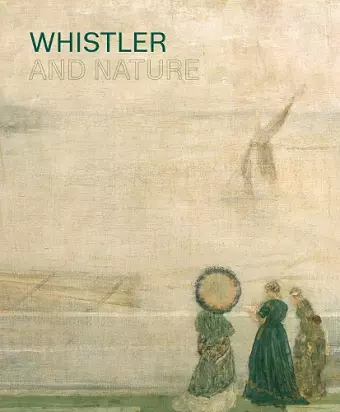Whistler and Nature
Patricia de Montfort author Clare Willsdon author Steven Parissien editor
Format:Paperback
Publisher:Paul Holberton Publishing Ltd
Published:20th Oct '18
Currently unavailable, our supplier has not provided us a restock date

The Anglo-American artist James McNeill Whistler (1834 – 1903) is a household name – a man who inspired and astonished the Victorian world. Less well known, though, is the influence of nature on Whistler’s work. This innovative and compelling study reconsiders Whistler’s work from the context of his military service and his relationship with ‘nature at the margins,' showing how Whistler’s observation of nature and its moods underpinned his haunting visions of nineteenth-century life. This innovative and compelling study reconsiders Whistler’s work from the context of his military service and his relationship with ‘nature at the margins.' Whistler came from a family of soldiers and engineers; his father, Major George Washington Whistler, was originally a US military engineer. Drawing and mapmaking were important components of the military training that Whistler acquired as an officer cadet at West Point Academy in 1851-4 and subsequently in the Drawing Department at the US Coast and Geodetic Survey, where he attempted to realize his father’s hopes that he would make engineering or architecture his profession. These influences in turn shaped Whistler’s attitude towards nature, as expressed in works ranging from his celebrated London ‘Nocturnes’ to his French coastal scenes – all of which were created after Whistler moved permanently to Europe in 1855. Whistler’s close observation of nature and its moods underpinned his powerful and haunting visions of nineteenth-century life. His images explore the contrasts between the natural and man-made worlds: rivers and wharves, gardens and courtyards, the ideal and the naturalistic. And his singular vison was always defined by his enduring affinity with the makers of railways, bridges, and ships, the cornerstones of Victorian wealth and trade. Influenced by Rembrandt, Whistler’s early etchings of London are notable for their focus on line and topographical accuracy. From the 1860s, his enthusiasm for Japanese art, too, influenced his attitude to perspective and spatial relations between objects. This led him, in his London Nocturnes, to reduce the external world before him to its bare bones. Whistler’s smoky images of warehouses, bridges, harbours and tall ships were designed to showcase a new kind of productive, wealth-generating landscape. It is a view of nature constrained by man-made structures: the shadowy outline of the warehouses and chimneys on the far shore; the mast and...
ISBN: 9781911300496
Dimensions: 260mm x 216mm x 10mm
Weight: 522g
120 pages